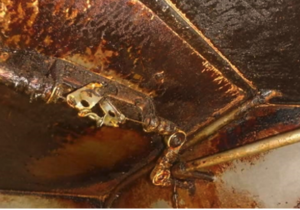The adage that “you can’t judge a book by its cover” holds especially true when it comes to evaluating commercial property in a field survey. Buildings that appear reasonably maintained from the outside can contain such hazards as water-damaged ceilings, faulty electrical panels, and inadequate fire protection.
Every year, thousands of these hazards are spotted in commercial properties across the United States in all geographies, from metropolitan areas to remote rural communities.
Every occupancy and type of business is represented, and dozens of carriers receive timely warnings that insuring one of these properties poses a greater-than-anticipated potential for loss.
The process often starts in the field with a phone call to the underwriter describing the hazardous conditions. A follow-up email might then detail each hazard or deficiency and include photographs of the conditions. Underwriters could also receive a written report, complete with details, photos, and recommendations.
Here are some of the most common hazards that trigger an early warning of higher risk:
Discrepancies in occupancy: Sometimes, a policy or application for insurance coverage will list one type of business, but a field representative will encounter a completely different use on site. An attractive multi-story building listed as manufacturing on the policy was discovered to be vacant when one of our field reps visited the property. Another visit to a retail store that still had a sign outside revealed empty shelves and abandoned fixtures inside. There has been a slight uptick in this type of discrepancy in recent months that may be related to COVID-19. Insurers should be aware that as some businesses permanently close, idle spaces may house new and different tenants and types of operations in the future.

Fire in commercial kitchens: Field reps are looking for gleaming stainless steel without grease build-up on appliances or in exhaust systems, as well as the presence of an automatic extinguisher system (AES) correctly placed over cooking appliances. Cooking is one of the top five causes of commercial property fires, according to the U.S. Fire Administration. The lack of an AES in kitchens where a deep fryer or charbroiler is present would prompt an early warning to an insurer. Sometimes reps find that when a restaurant moves in with new equipment, the existing AES and ventilation system are inadequate. Accumulated grease in the exhaust system’s filters, hood, and duct system is one of the most common deficiencies seen in the field. The grease is a potential fuel source for fire, and if it is present in the ductwork, and even on the roof, the potential for extensive damage of both interior and exterior is high.
Electrical problems: Electrical deficiencies and malfunctions are also among the top five commercial fire hazards. Field reps examine breaker panels and wiring to look for such hazards as spliced and exposed wires, missing panel doors and spacers, conduits blocking the panel door, and water damage near the electrical panel.

Spray painting: Spray painting creates a significant hazard if done without safety precautions because of the large volume of vaporized flammable particles released into the air from the paint and propellants. Spray painting is ideally performed in a special booth designed of non-combustible materials equipped with a filtered exhaust system that vents outside the building. An AES should be in place to protect the entire booth. Sometimes a field survey will uncover a makeshift painting setup out in the open. Our field reps have also encountered an enclosed booth that was coated with so much paint that its vents were useless for removing paint fumes.
Woodworking: The fine dust particles produced by woodworking are easily suspended in the air if there isn’t an effective dust collection system in place, creating a fire hazard because they are easily ignited. Field reps are looking to ensure there is machinery to collect the dust and discharge it outside the building.
Water damage: Field reps often discover evidence of leaky roofs, drainage issues, and other plumbing issues when they walk through a property.
Accidents waiting to happen: Slips, trips, and falls are among the top preventable injuries, according to the National Safety Council. Field surveyors look for these hazards as well as other safety concerns that can pose a liability hazard, including balconies without appropriate guard rails on multi-story commercial buildings and apartment buildings. Swimming pools are another property feature that field representatives closely examine for life safety and obvious structural issues and ensure adequate fencing, locked gates, an appropriate drain, and securely stored chemicals.
A warning that a property has the potential for unexpected and higher-than-usual claims before an insurer writes or renews a policy can prevent premium leakage and reduce loss costs.
Was this article valuable?
Here are more articles you may enjoy.

 Florida And East Coast Will See Big Losses From More Cat 5 Storms, Researchers Say
Florida And East Coast Will See Big Losses From More Cat 5 Storms, Researchers Say  ‘Super Roofs’ Are Rewarding Insurers, Cat Bond Investors and Homeowners
‘Super Roofs’ Are Rewarding Insurers, Cat Bond Investors and Homeowners  How Three New CMS Policies Impact Workers’ Comp Claims
How Three New CMS Policies Impact Workers’ Comp Claims  Zillow Deleting Climate Risk Scores Reveals Limits of Flood, Fire Data
Zillow Deleting Climate Risk Scores Reveals Limits of Flood, Fire Data 